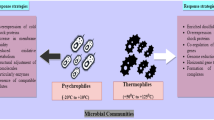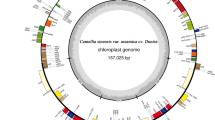Abstract
Diversity of A mating type in Lentinula edodes has been assessed by analysis of A mating loci in 127 strains collected from East Asia. It was discovered that hypervariable sequence region with an approximate length of 1 kb in the A mating locus, spanning 5′ region of HD2-intergenic region-5′ region of HD1, could represent individual A mating type as evidenced by comprehensive mating analysis. The sequence analysis revealed 27 A mating type alleles from 96 cultivated strains and 48 alleles from 31 wild strains. Twelve of them commonly appeared, leaving 63 unique A mating type alleles. It was also revealed that only A few A mating type alleles such as A1, A4, A5, and A7 were prevalent in the cultivated strains, accounting for 62.5% of all A mating types. This implies preferred selection of certain A mating types in the process of strain development and suggests potential role of A mating genes in the expression of genes governing mushroom quality. Dominant expression of an A mating gene HD1 was observed from A1 mating locus, the most prevalent A allele, in A1-containing dikaryons. However, connections between HD1 expression and A1 preference in the cultivated strains remain to be verified. The A mating type was highly diverse in the wild strains. Thirty-six unique A alleles were discovered from relatively small and confined area of mountainous region in Korean peninsula. The number will further increase because no A allele has been recurrently observed in the wild strains and thus newly discovered strain will have good chances to contain new A allele. The high diversity in small area also suggests that the A mating locus has evolved rapidly and thus its diversity will further increase.
Similar content being viewed by others
References
Au, C.H., Wong, M.C., Bao, D., Zhang, M., Song, C., Song, W., Law, P.T., Kües, U., and Kwan, H.S. 2014. The genetic structure of the A mating-type locus of Lentinula edodes. Gene 535, 184–190.
Bakkeren, G., Kämper, J., and Schirawski, J. 2008. Sex in smut fungi: structure, function and evolution of mating-type complexes. Fungal Genet. Biol. 45, S15–S21.
Balasubramanian, B., Lowry, C.V., and Zitomer, R.S. 1993. The Rox1 repressor of the Saccharomyces cerevisiae hypoxic genes is a specific DNA-binding protein with a high-mobility-group motif. Mol. Cell. Biol. 13, 6071–6078.
Banham, A.H., Asante-Owusu, R.N., Gottgens, B., Thompson, S., Kingsnorth, C.S., Mellor, E., and Casselton, L.A. 1995. An N-terminal dimerization domain permits homeodomain proteins to choose compatible partners and initiate sexual development in the mushroom Coprinus cinereus. Plant Cell 7, 773–783.
Casselton, L.A. and Olesnicky, N.S. 1998. Molecular genetics of mating recognition in basidiomycete fungi. Microbiol. Mol. Biol. Rev. 62, 55–70.
Chen, L., Gong, Y., Cai, Y., Liu, W., Zhou, Y., Xiao, Y., Xu, Z., Liu, Y., Lei, X., Wang, G., et al. 2016. Genome sequence of the edible cultivated mushroom Lentinula edodes (shiitake) reveals insights into lignocellulose degradation. PLoS One 11, e0160336.
Coelho, M.A., Sampaio, J.P., and Gonçalves, P. 2010. A deviation from the bipolar-tetrapolar mating paradigm in an early diverged basidiomycete. PLoS Genet. 6, e1001052.
Ekena, J.L., Stanton, B.C., Schiebe-Owens, J.A., and Hull, C.M. 2008. Sexual development in Cryptococcus neoformans requires CLP1, a target of the homeodomain transcription factors Sxi1a and Sxi2a. Eukaryot. Cell 7, 49–57.
Gillissen, B., Bergemann, J., Sandmann, C., Schroeer, B., Bölker, M., and Kahmann, R. 1992. A two-component regulatory system for self/non-self recognition in Ustilago maydis. Cell 68, 647–657.
Ha, B.S., Kim, S., and Ro, H.S. 2015. Isolation and characterization of monokaryotic strains of Lentinula edodes showing higher fruiting rate and better fruiting body production. Mycobiology 43, 24–30.
Inada, K., Morimoto, Y., Arima, T., Murata, Y., and Kamada, T. 2001. The clp1 gene of the mushroom Coprinus cinereus is essential for A-regulated sexual development. Genetics 157, 133–140.
James, T.Y., Liou, S.R., and Vilgalys, R. 2004. The genetic structure and diversity of the A and B mating-type genes from the tropical oyster mushroom, Pleurotus djamor. Fungal Genet. Biol. 41, 813–825.
James, T.Y. 2012. Ancient yet fast: rapid evolution of mating genes and mating systems in fungi, pp. 187–200. In Singh, R.S., Xu, J., and Kulathinal, R.J. (eds.), Rapidly evolving genes and genetic systems. Oxford University Press, Oxford, UK.
Johnson, A. 2003. The biology of mating in Candida albicans. Nat. Rev. Microbiol. 1, 106–116.
Kämper, J., Reichmann, M., Romeis, T., Bölker, M., and Kahmann, R. 1995. Multiallelic recognition: nonself-dependent dimerization of the bE and bW homeodomain proteins in Ustilago maydis. Cell 81, 73–83.
Kües, U. 2015. From two to many: multiple mating types in Basidiomycetes. Fungal Biol. Rev. 29, 126–166.
Kurischko, C., Schilhabel, M.B., Kunze, I., and Franzl, E. 1999. The MAT A locus of the dimorphic yeast Yarrowia lipolytica consists of two divergently oriented genes. Mol. Gen. Genet. 262, 180–188.
Nieuwenhuis, B.P., Debets, A.J., and Aanen, D.K. 2011. Sexual selection in mushroom-forming basidiomycetes. Proc. Royal. Soc. London B Biol. Sci. 278, 152–157.
Ohm, R., de Jong, J., Lugones, L., Aerts, A., Kothe, E., Stajich, J., de Vries, R., Record, E., Levasseur, A., Baker, S., et al. 2010. Genome sequence of the model mushroom Schizophyllum commune. Nat. Biotechnol. 28, 957–963.
Pardo, E.H., O’Shea, S.F., and Casselton, L.A. 1996. Multiple versions of the A mating type locus of Coprinus cinereus are generated by three paralogous pairs of multiallelic homeobox genes. Genetics 144, 87–94.
Raper, J.R., Baxter, M.G., and Ellingboe, A.H. 1960. The genetic structure of the incompatibility factors of Schizophyllum commune: the A-factor. Proc. Nat. Acad. Sci. USA 46, 833–842.
Scherer, M., Heimel, K., Starke, V., and Kämper, J. 2006. The Clp1 protein is required for clamp formation and pathogenic development of Ustilago maydis. Plant Cell 18, 2388–2401.
Skrede, I., Maurice, S., and Kauserud, H. 2013. Molecular characterization of sexual diversity in a population of Serpula lacrymans, a tetrapolar basidiomycete. G3-Gene. Genom. Genet. 3, 145–152.
Spit, A., Hyland, R.H., Mellor, E.J.C., and Casselton, L.A. 1998. A role for heterodimerization in nuclear localization of a homeodomain protein. Proc. Nat. Acad. Sci. USA 95, 6228–6233.
Wang, W., Lian, L., Xu, P., Chou, T., Mukhtar, I., Osakina, A., Waqas, M., Chen, B., Liu, X., Xie, B., et al. 2016. Advances in understanding mating type gene organization in the mushroom- forming fungus Flammulina velutipes. G3-Gene. Genom. Genet. 6, 3635–3645.
Yi, R., Tachikawa, T., Ishikawa, M., Mukaiyama, H., Bao, D., and Aimi, T. 2009. Genomic structure of the A mating-type locus in a bipolar basidiomycete, Pholiota nameko. Mycol. Res. 113, 240–248.
Author information
Authors and Affiliations
Corresponding author
Additional information
Supplemental material for this article may be found at http://www.springerlink.com/content/120956.
Electronic supplementary material
Rights and permissions
About this article
Cite this article
Ha, B., Kim, S., Kim, M. et al. Diversity of A mating type in Lentinula edodes and mating type preference in the cultivated strains. J Microbiol. 56, 416–425 (2018). https://doi.org/10.1007/s12275-018-8030-6
Received:
Revised:
Accepted:
Published:
Issue Date:
DOI: https://doi.org/10.1007/s12275-018-8030-6




